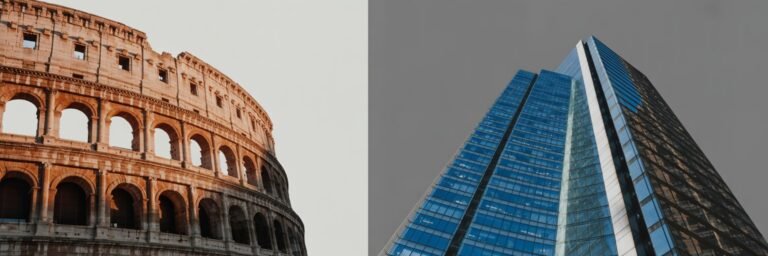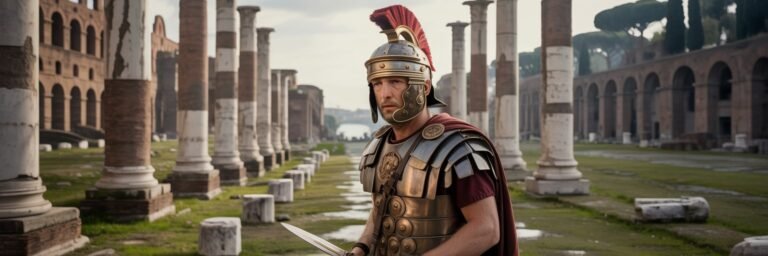INTRODUCTION
Venture into the annals of western civilization’s history and you inevitably encounter one of the most pivotal and colossally influential epochs – The Roman Empire. Tightly woven into every layer of Europe’s fabric, from its legal systems to its architecture, language, and governance, Rome’s imperial legacy has left an indelible imprint on the world. Yet, there are elements of its story that remain startlingly uncharted, shadows within this timeworn narrative that whisper tales lesser known. Welcome to the untold story of the Roman Empire, a journey into the heart of Rome, beyond the beaten path of traditional historiography.
HISTORICAL BACKGROUND
The Roman Empire, in the ancient Mediterranean world, extended, at its zenith, from Britain to the Near East and from the Rhine to North Africa. It emerged circa 27 BC when Augustus, Julius Caesar’s heir, established a de facto autocracy in the guise of a republic. From Augustus’s reign to that of Marcus Aurelius (AD 161–180), during an era known as the Pax Romana, the Roman world experienced profound stability and prosperity.
However, the second century’s end hailed a cycle of political instability, economic tribulation, and barbarian invasions. The late third-century Emperor Diocletian attempted to address these issues by dividing the empire into an Eastern and a Western half, creating a tetrarchy. While this move temporarily stalled the decline, the Roman Empire eventually succumbed to what is referred to as the Fall of Rome in AD 476, marked by Romulus Augustus’s abdication, the last of the Western Roman emperors.
THEORIES AND INTERPRETATIONS
Scholars have ventured diverse theories as to why the Roman Empire fell. From attributions to moral degeneration, environmental decline, and diseases, all the way to cataclysmic military failures, the theories are as manifold as they are contentious. Edward Gibbon in his seminal work, “The Decline and Fall of the Roman Empire,” cites the decline in virtues like civic duty, discipline, and the emergence of Christianity that challenged traditional Roman beliefs.
In contrast, the more archeological approach expounded upon by scholars, such as Bryan Ward-Perkins and Peter Heather, places the Germanic migratory onslaught resulting from Hunnic invasions at the very core of the Empire’s demise. Referred to as the Barbarian takeover theory, it contradicts the transformation theory, which posits that the Roman Empire never truly fell but rather transformed into several Roman cultures in Germany, France, and Italy.
MYSTERIES AND CONTROVERSIES
Several haunting mysteries still shroud the Roman empire. The disappearance of the Ninth Legion Hispana, a unit of 5,000 soldiers, vanishing off the face of the earth after marching into the Scottish mists under vexillation, is one such enigma. The mystery of the teenage Emperor Alexander Severus and his mother’s destined journey to their death, guided by a bizarre prophecy and a wheel of cheese, is yet another.
Perhaps one of the most contentious issues is the debate over “Roma Aeterna,” the concept of the perpetuity of Rome. Scholars like Oswald Spengler refuted it, asserting that the empire was destined to decline, while others maintained that the Roman spirit continues to permeate modern European societies.
SYMBOLISM AND CULTURAL SIGNIFICANCE
The Roman legacy is ineffably monumental. It’s not merely military conquests, law, and language, but also its cultural and symbolic contributions that continue to resonate. The Roman narratives of courage, sacrifice, duty, and the transcendental ideals embodied in figures like Marcus Aurelius have massively influenced Western thought. Statues of Augustus, symbols of imperial authority enduring across time, convey the Empire’s grandeur alongside resiliency.
The Roman pantheon, the amalgamation of Greek deities embodied in Roman characters, too, has trickled down into our literature and art. Who can overlook Athena transformed into the indomitable Minerva, or Zeus reimagined as Jupiter?
MODERN INVESTIGATIONS
Modern archaeological and historical research sheds fresh light on the unexplored crevices of the Roman Empire. Digital humanities, such as the Stanford Geospatial Network Model of the Roman World (ORBIS), supplement our understanding of trade routes, military logistics, and economic relationships within the Empire.
Epigenetic studies on Roman-era skeletal remains assist in profiling diseases and food habits. Meanwhile, the ‘Portus’ project, aimed at understanding Rome’s ancient port, has revealed insights into Roman imports and consumption patterns. These scientific advances continue to unravel the secrets of an empire that has been gone for over a millennium and a half.
LEGACY AND CONCLUSION
Despite Rome’s fall in the distant past, its specter continues to pervade today. Every cornerstone of western civilization, from our legal systems, legislative assemblies, architectural principles, to the Latin lingua franca mirrored in the Romance languages, trace their lineage back to Rome. The ‘res publica,’ the republic, isn’t merely a form of governance; it’s a Roman invention that has profoundly shaped the world.
In the realm of philosophy, Rome’s Stoic philosophers, most notably Seneca, Epictetus, and the Emperor-philosopher Marcus Aurelius, have provided the genesis for modern self-help thought, resilience, and mental health discourse.
The untold story of the Roman Empire, lurking in historical shadows, invites us to venture past the well-trodden paths, beyond the Colosseum and the gladiators, and into the heart of an entity that arguably shaped our world more than any other. It’s a captivating narrative of rise and fall, of spiritual transformations, and of humanity’s continual evolution, orchestrated on the grand stage of history, conducted by the imperishable symphony of time.






